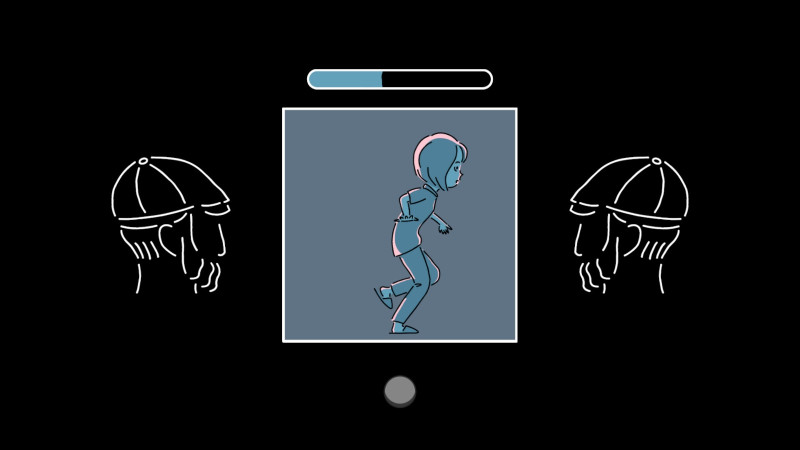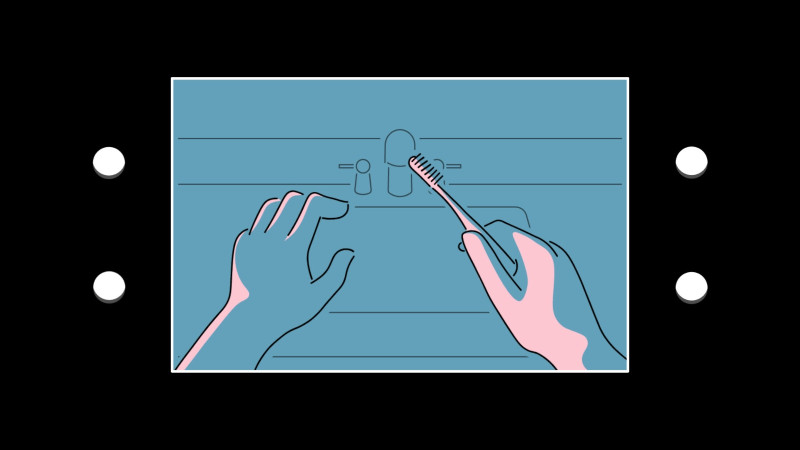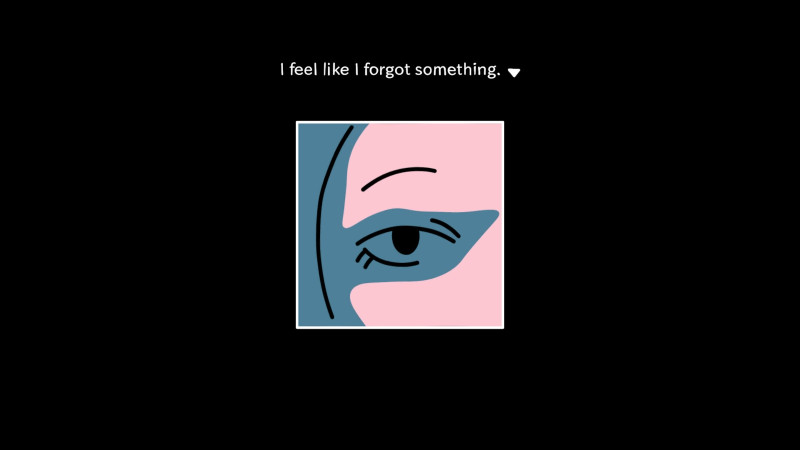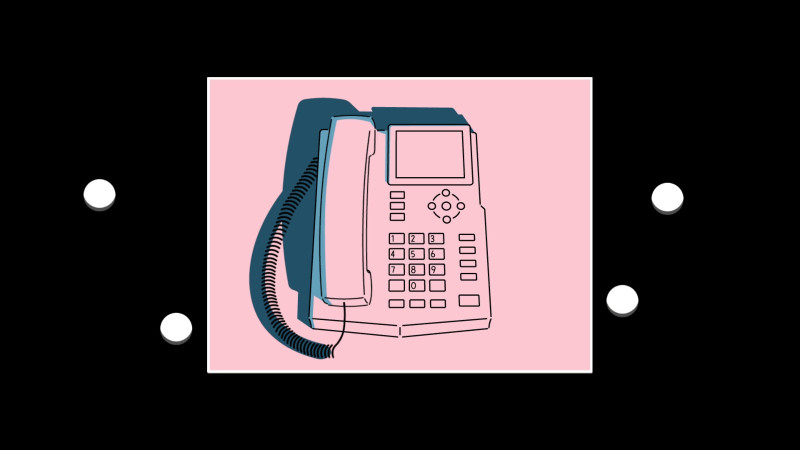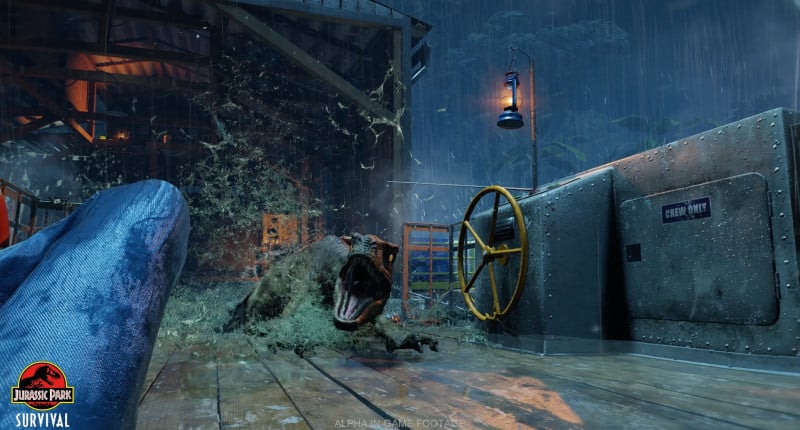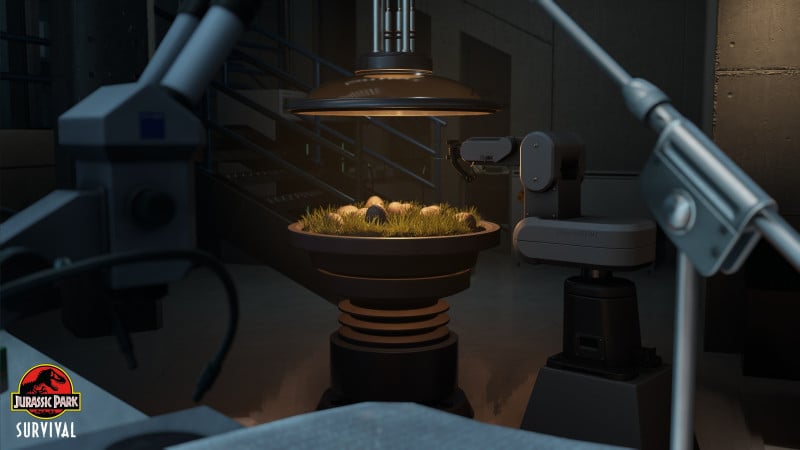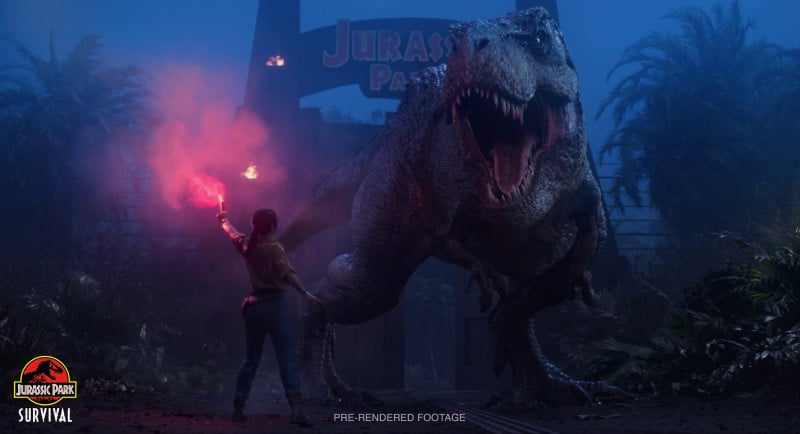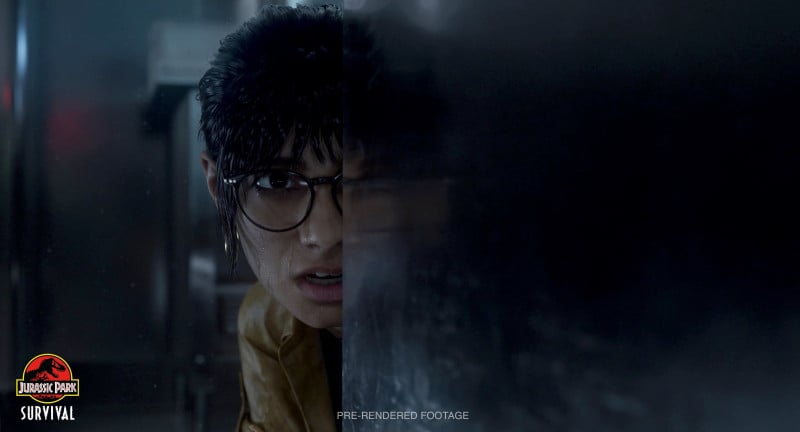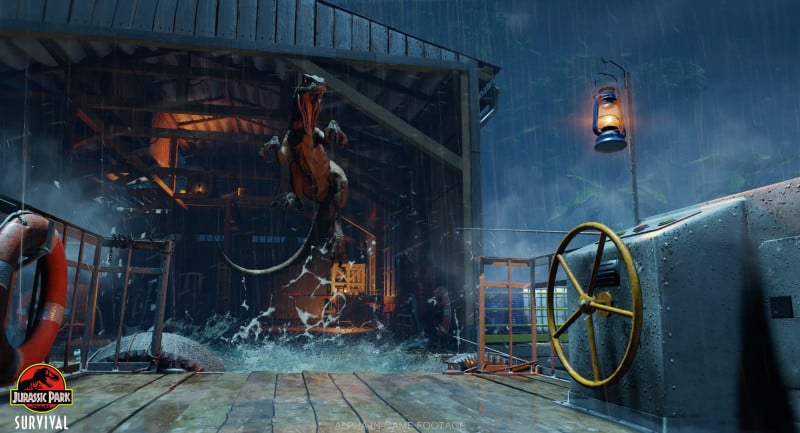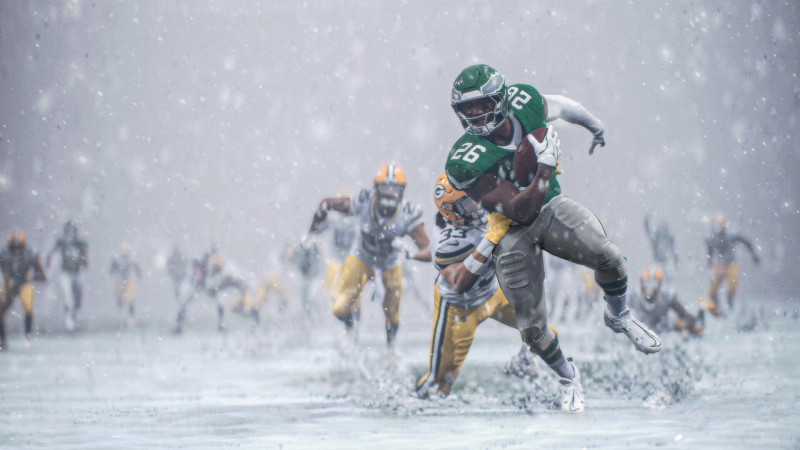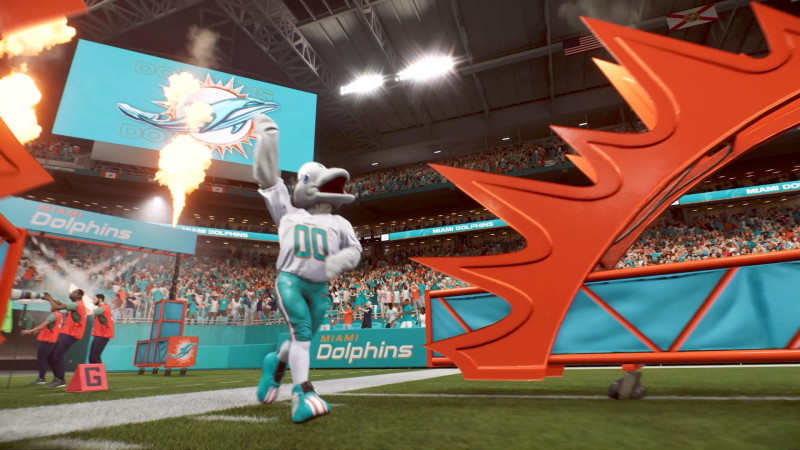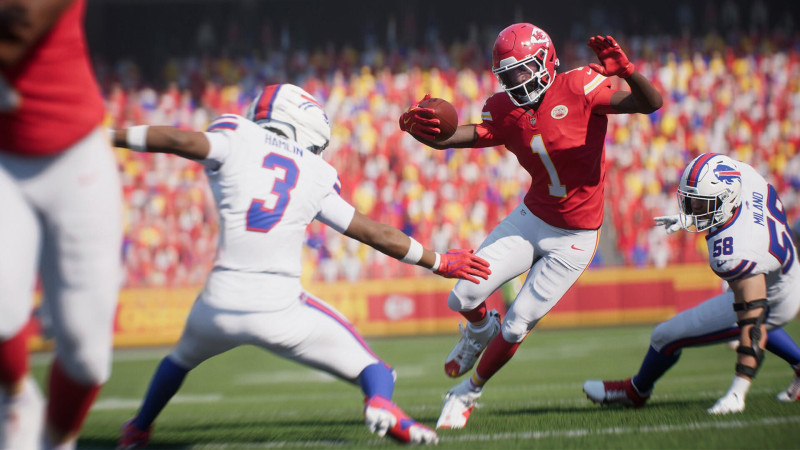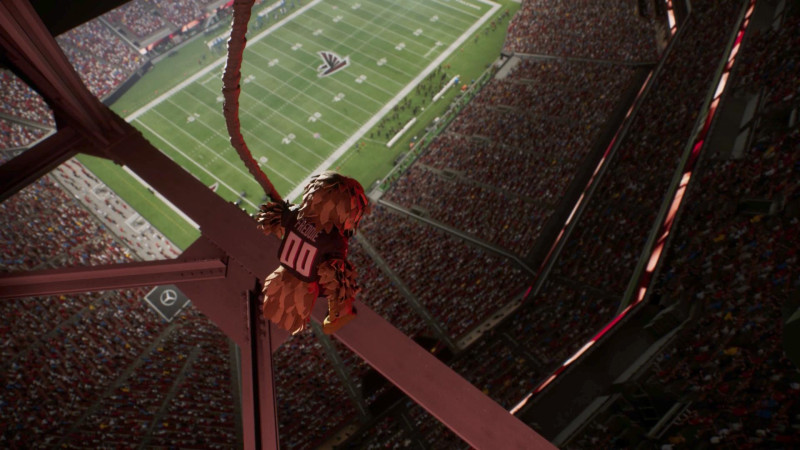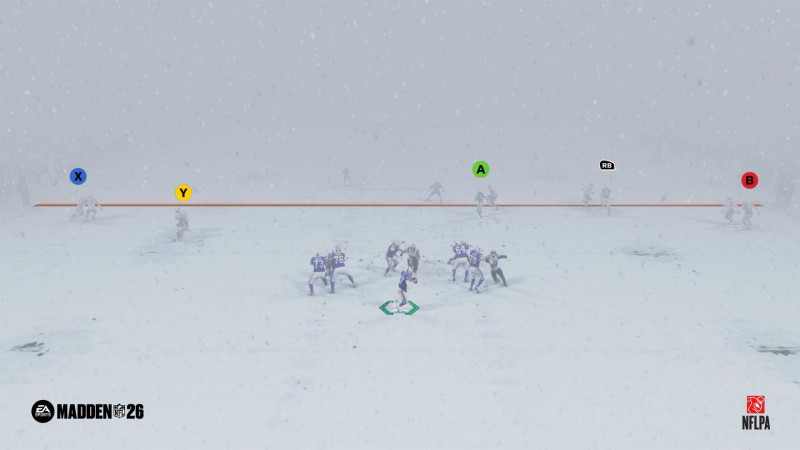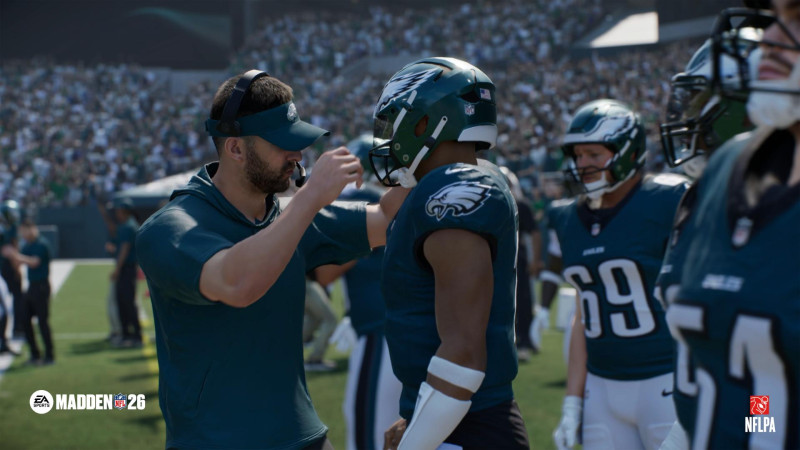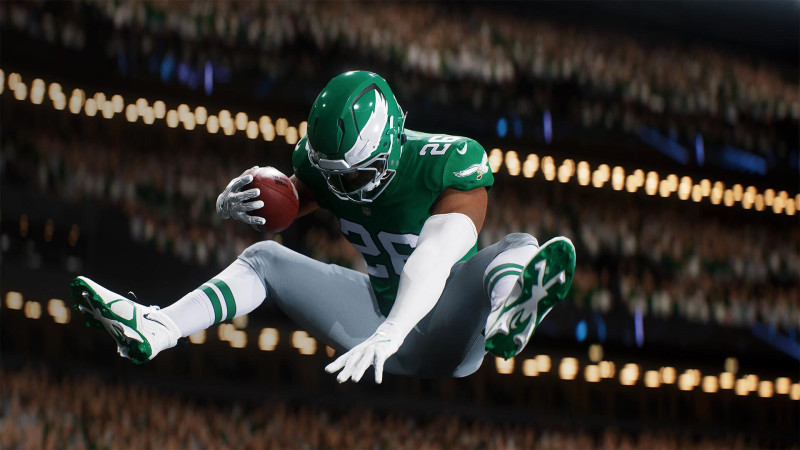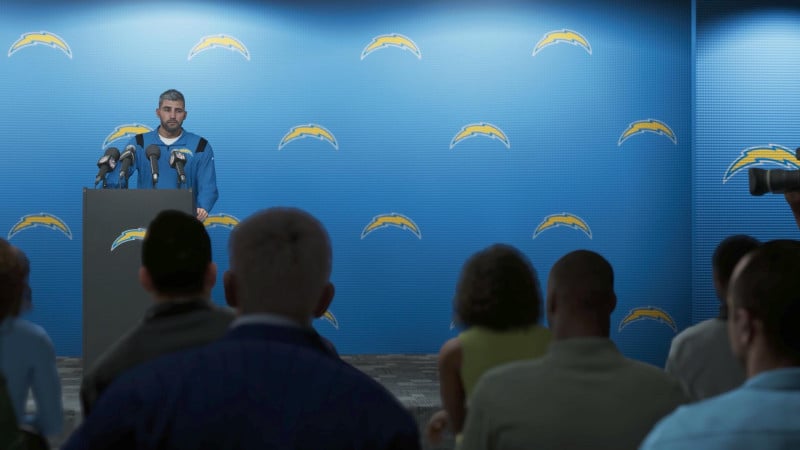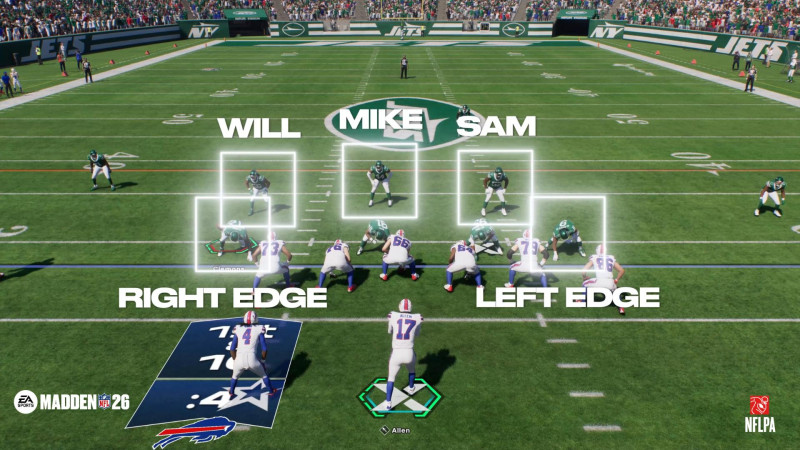Reading List
The most recent articles from a list of feeds I subscribe to.
What Makes Vampire: The Masquerade – Bloodlines 2 A "Bloodlines" Game?
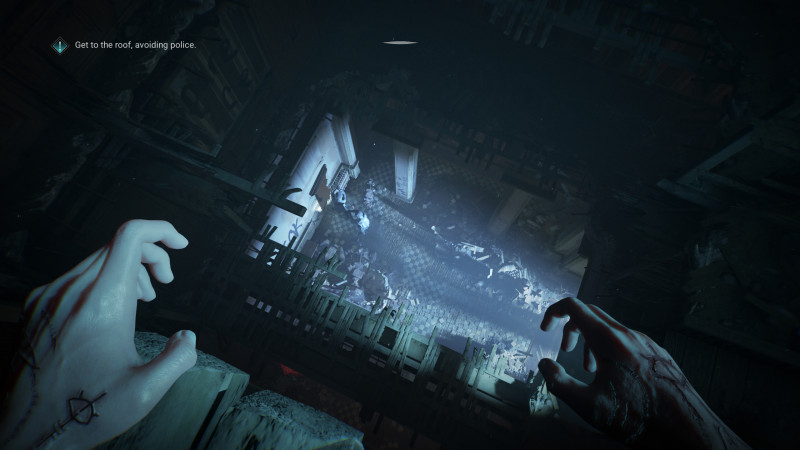
Vampire: The Masquerade – Bloodlines 2 is a sequel to a game from over 20 years ago, and as a result, the two RPGs don't look similar. The art is modernized, and between the combat overhaul, the more linear approach to storytelling, and a completely new developer, it does raise a big question: why call it Bloodlines 2? After all, if the new game is so different from the original, why tie it to that game instead of calling it something new? On our exclusive cover story trip to Brighton, England, we asked the developers at The Chinese Room this exact question, and they had a few responses.
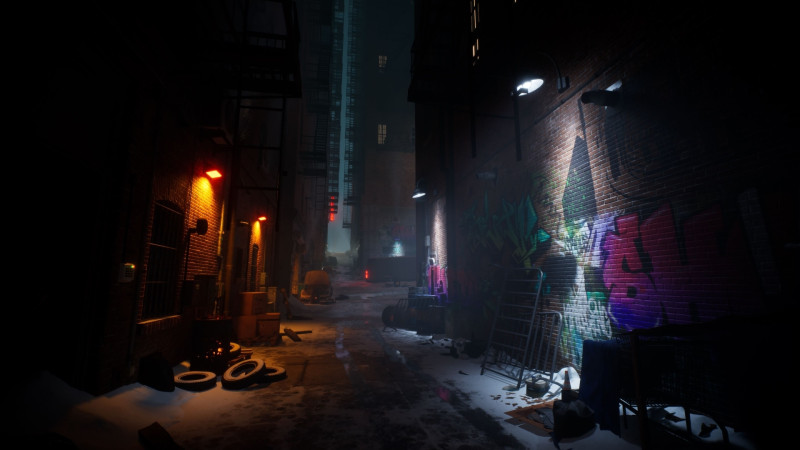 An alley in Bloodlines 2
An alley in Bloodlines 2
When I ask creative director Alex Skidmore why the game is called Bloodlines 2 instead of something else, he thinks for a while, then starts his answer by saying, "It's what we were asked to do." It's an honest response. Notoriously, Bloodlines 2 was originally being made by Hardsuit Labs and got far enough in development to be shown at E3 2019, but the next two years were filled with delays, departures, and ultimately, the decision to remove Hardsuit Labs from the project entirely. The Chinese Room took its place, and since it was working on a project that had already been announced, it didn't have much of a choice – this game would always be called Bloodlines 2.
It raises a more interesting question, however. What exactly makes a game a Bloodlines game? It's a series with only one prior entry, and modernizing it, while largely for the better, creates massive differences.
It makes me think about game series like Assassin's Creed. In its early days, I would have said it was defined by stealth, parkour, and the relationship between the past and modern day, but later entries de-emphasized all three of these traits, and the series is still going strong. It was a gradual shift, however; a jump straight from Assassin's Creed 1 to Assassin's Creed Shadows would be jarring, and that's a timespan several years shorter than between the Bloodlines games.
Ultimately, you could ask a hundred fans of a game what its defining characteristics are, and no two lists would be identical. When I ask narrative director Ian Thomas what stood out about the original Bloodlines, he says, "I think that's difficult to say from person to person, because everybody has a personal experience of it. For me, what it was so good at was atmosphere. Just completely drenched everything in atmosphere.
 A street in Bloodlines 1
A street in Bloodlines 1
"The same, I think, is true of a lot of old games," Thomas continues. "[The parts] which stick, certainly to a story game player like me, tend to be the atmosphere, the music, the lighting, the characters that you meet. Those tend to be the key ingredients for me."
Naturally, he says the atmosphere is one of the main elements they tried to nail in the sequel: "You can meet the people and juggle the politics between them, which is very much [like] the old Bloodlines. [...] But again, as I said earlier, for me, the original Bloodlines was so much about being drenched in that atmosphere, and I like to think we carry that off really well, to try and give you the same kind of feel to it."
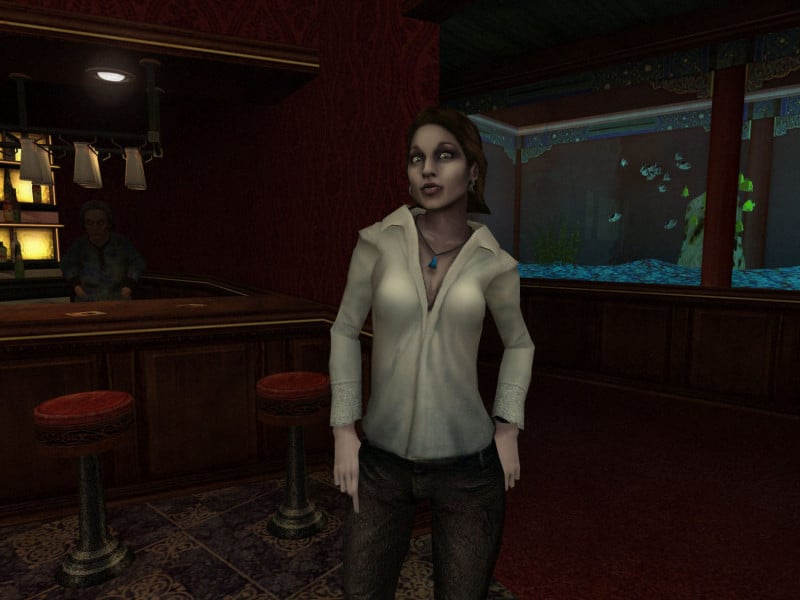 A vampire in Bloodlines 1
A vampire in Bloodlines 1
He concludes by saying the tone and the feel of Bloodlines inspired the sequel's plot as well. "Even if, beat by beat, the story doesn't directly descend from Bloodlines 1, the same feel – and the same shape – is there, and we're showing almost the same kind of set of playing pieces, just in a new stage in a different state," he says.
Unlike the newly embraced Kindred in the original game, Phyre, Bloodlines 2's protagonist, is an elder vampire. That said, they start the game by waking up in an unfamiliar city after a 100-year sleep, so they’re practically just as new to the game's world as a Bloodlines 1 protagonist. The game still has factions to manage, choices to make, and rules to abide by, even if this sequel seems to be more linear than its predecessor. Like Thomas says, the beats are different, but they form a familiar shape.
Still, I expect the changes may upset some diehard fans of the original, especially the fact that the base version of Bloodlines 2 only includes four clan options for Phyre (compared to the original's seven) and excludes some of the most game-altering options, like Malkavian and Nosferatu. On the other hand, I am very excited for the new combat system. I didn't know I wanted it until I tried it, and now I'm (pun-intended) hungry for more.
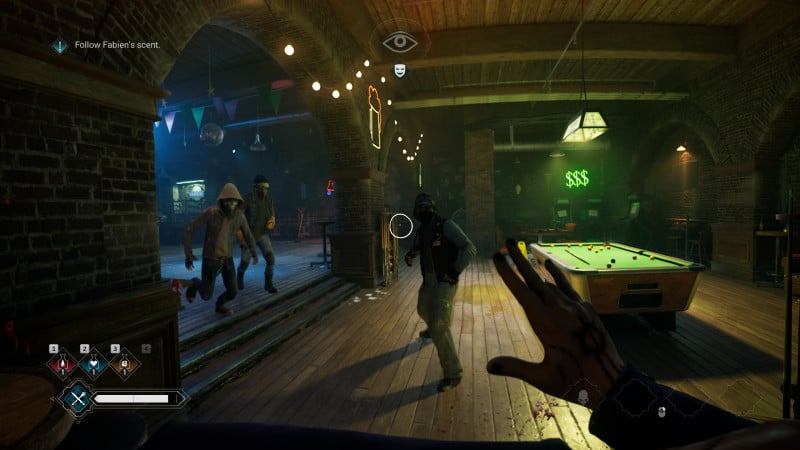 A bar fight in Bloodlines 2
A bar fight in Bloodlines 2
While Skidmore started by saying Bloodlines 2 was what he was "asked to do," his full response is much more thorough.
"We wanted to broaden our capability and showcase extra skills that we could do," Skidmore says. "Because you can tell deeper stories when you get deeper mechanics, a story where you can be violent within it [...] In this game, there are story choices – I don't want to spoil them too much – where you will have people's lives in your hands. We don't have that in our other games. So as a studio, we've grabbed this opportunity with both hands.
"The World of Darkness fits our storytelling, our sort of mature style of storytelling. So ultimately, this Bloodlines 2 is what happens when The Chinese Room makes a Bloodlines 2."
Vampire: The Masquerade – Bloodlines 2 is out this October. For more on the game, check out our hands-on discussion during The Game Informer Show, our interview with the art director, or our exclusive digital cover story.
And Roger Review – When Actions Speak Louder
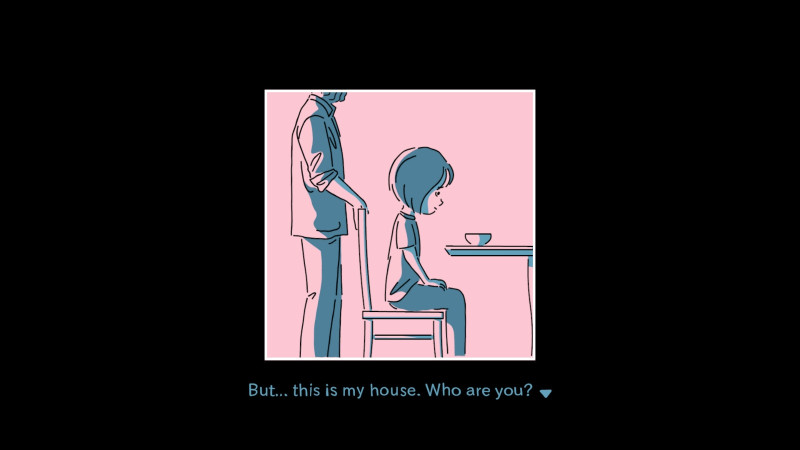
Reviewed on:
Switch
Platform:
Switch, PC
Publisher:
Kodansha
Developer:
TearyHand Studio
Release:
Rating:
Everyone
It’s tough to discuss And Roger without giving away its bittersweet plot. This emotional visual novel excels at telling its gripping story through ingenious gameplay, demonstrating the power of showing rather than telling to deliver a powerful experience.
Over the span of three succinct chapters, And Roger does a stellar job telling the tumultuous tale of a girl scared and confused by the presence of a mysterious man in her home. Who is the person? Why does he seem to know her even though he’s a stranger? What happened to the girl’s father? Discussing the plot any further would give away what’s really happening, but the narrative is effective in that it’s an ordinary tale grounded in a tragically relatable core. This is an affecting tale of love, patience, and forgiveness, and while initially tricky to follow, gameplay helps clear the fog by using smart context clues.
And Roger is a mechanically clever and emotionally effective point-and-click adventure due to how well it captures the emotion of any given scene. For example, opening a door while frantically fleeing the stranger requires clicking the correct button in a floating batch of identically similar buttons. Running through the first door is easy, as you only have to find one button out of three. Each subsequent door, however, populates the screen with upwards of a dozen moving buttons, necessitating me quickly clicking through all of them until I found the right one. I felt my heart rate rising the longer this chaotic exercise went on. Is the stranger right behind me? Where is that stupid button? And Roger excels at conveying often stressful emotions such as panic, confusion, and fear using only simple interactions.
Whether it’s washing the girl’s hands, reciting a prepared speech, or simply trying to talk with a sweetheart, And Roger consistently offers novel and playful ways to convey how the girl is feeling in a given moment. Whether it’s memorization exercises or connecting broken lines symbolizing conversation threads, interactions (including fourth-wall-breaking twists on mundane game menu settings) are intentionally more challenging or involved than needed to serve the plot. Even so, gameplay never veers into being a nuisance. Instead, experiencing the same sense of hardship in gameplay strengthened my personal connection and empathy for its small cast.
The simple yet charming illustrations are complemented by a sparse color palette, which the game uses well to set the tone. Serious moments may be darkened by moody greys and blacks before happier moments paint the screen in warm hues of orange or blue. The perfectly paced narrative, backed by well-written dialogue and a moving soundtrack, makes great use of its roughly one-hour runtime. The story’s brevity and cryptic storytelling make a compelling case to replay And Roger immediately after the credits roll, and I can’t recommend doing so enough. I liked the game a lot on the first playthrough, but I fell in love with it on the second go-around, as I had the context to fully grasp and appreciate its design choices.
And Roger left me feeling a whirlwind of emotions, from distressed to sympathetic to hopeful, using little more than a mouse cursor. The best compliment I can give is that it reminds me so much of 2018’s Florence, a game I adore, in how it uses clever interactions to communicate relatable feelings and situations. While I wouldn’t wish the plight of its protagonist on my worst enemy, I would happily recommend this experience as another strong example of video games' strength as a storytelling medium.
Score: 8.5
Reader Discussion: What’s The Biggest Game In Your 2025 Backlog?
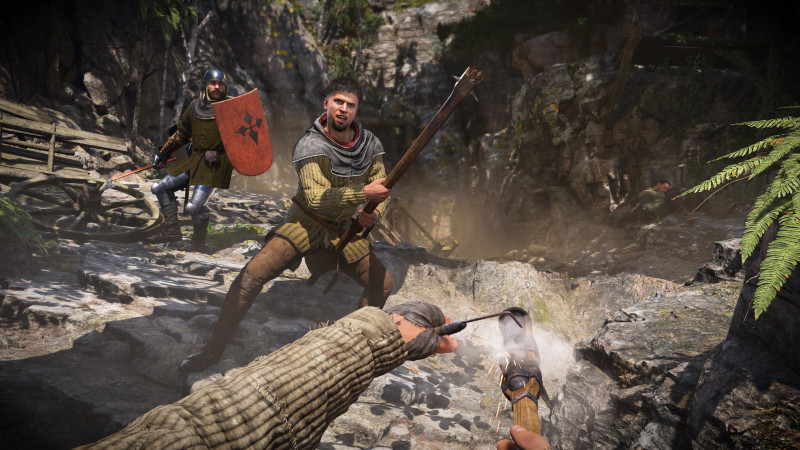
We all have a backlog. It’s just a way of life as a video game enthusiast. As we’re now over halfway through 2025, which has graced us with many exceptional titles, what’s the biggest game to release this year that you still haven’t played?
My answer for this is easy: Kingdom Come: Deliverance II. It’s big, it’s long, and, by many accounts, it’s fantastic. My fellow editor Wesley LeBlanc spoke highly of it in his glowing review, scoring the game a 9.5 out of 10. That’s Game of the Year caliber, meaning I’m professionally obligated to at least put some significant time into the copy I own for end-of-year award discussions. I just have to make the time; a daunting task with so many other games both available and on the horizon.
I’ve confessed my crimes, so I turn the discussion to you all, our lovely readers: what’s the biggest 2025 release still awaiting your attention? Do you think you'll actually play (or even finish) it this year? Sound off in the comments!
Get A New Look At Jurassic Park: Survival In New Behind-The-Scenes Featurette

One of the more exciting announcements of The Game Awards 2023 was the reveal of Saber Interactive's Jurassic Park: Survival, a first-person survival horror game set on Isla Nublar, a day after the events of Jurassic Park. Since then, the team has remained quiet on its development, but today, Saber released a five-minute behind-the-scenes featurette that includes details about the game's setting, lead protagonist, and plenty of pre-alpha footage.
Set one day after the events of 1993's Jurassic Park, players control Dr. Maya Joshi (played by actress Payal Mistry), an InGen scientist personally recruited to the park by John Hammond. Unfortunately, following the events of the film, Maya still remains on Isla Nublar, trapped and forced to survive against all kinds of dinosaurs. If today's featurette is any indication, that includes velociraptors, dilophosauruses, and of course, the mighty T-Rex.
Check out these dinos and more in the Jurassic Park: Survival featurette below:
Jurassic Park: Survival will launch on PlayStation 5, Xbox Series X/S, and PC sometime in the future, though Saber hasn't revealed details about when.
While waiting to learn more, watch the original Jurassic Park: Survival reveal trailer, and then check out the reveal trailer for Jurassic World Evolution 3.
What do you hope to see from this game? Let us know in the comments below!
Madden NFL 26 Review - Not Ready For Primetime
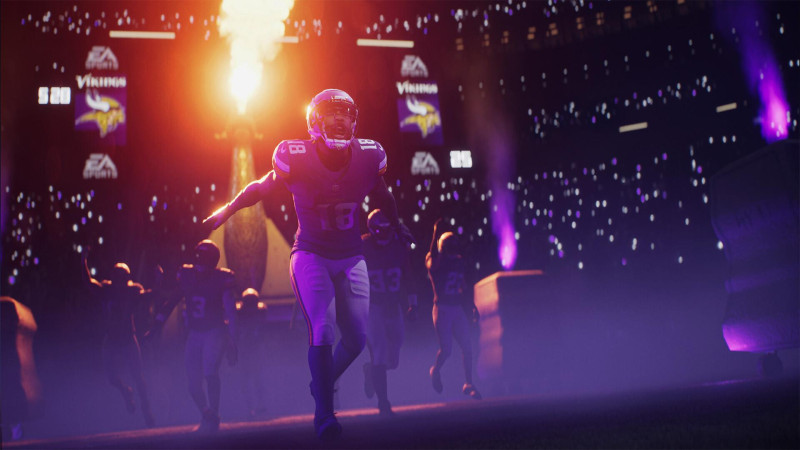
Reviewed on:
PlayStation 5
Platform:
PlayStation 5, Xbox Series X/S, PC
Publisher:
EA Sports
Developer:
EA Tiburon
Release:
During each NFL offseason, front offices work to add the pieces necessary to field a better team than the year before. Sometimes, despite making all the right moves on paper, things just don’t come together the way they had hoped. Similarly, the Madden NFL franchise looked to have a terrific offseason, adding several exciting features to its long-running formula, but sadly, despite various important improvements, Madden NFL 26 falls well short of being championship caliber.
On the field, Madden NFL 26 plays as authentic as ever, particularly thanks to improved superstar behavior. Lamar Jackson tucks and runs more than other QBs, Patrick Mahomes exudes confidence in high-pressure situations, and TJ Watt will go for the strip whenever he can. Players like Watt also benefit from improved defensive adjustments, which allow you to change your rush type pre-play, as well as gamble on guessing the route type in coverage. When combined with more true-to-life player performance and expanded playbooks, Madden NFL 26 offers a strong on-the-field product.
Off the field, players have a bevy of options. Card-collection mode Ultimate Team gives you plenty of compelling online and offline opportunities to earn packs and in-game currency en route to creating the team of your dreams, but long-form modes like Franchise and Superstar continue to be my destinations. Franchise effectively captures the thrill of taking the reins of your favorite team in hopes of turning their fortunes around, crafting the next dynasty, or maybe even relocating them. Coaching plays a bigger role this year, with new archetypes to choose from and skill trees to develop, plus better tools for scouting your opponents, new gameplan options, player wear and tear management, and increased coordinator importance.
Superstar continues to build on the exciting premise of creating a custom athlete and guiding them through their career. I’m still enamored by my annual tradition of pushing my player up the depth chart to become the franchise QB, and the new Sphere of Influence mechanic adds free-time decisions that impact your relationships with teammates, coaches, and other people.
For example, choosing to go on a podcast instead of getting in an extra training session will please your agent, but upset your strength coach. I love how improving my relationship with my agent gets me access to more sponsorships, while getting in on the good graces of my head coach adds more selectable plays on the field. I enjoy the time-management aspect, but I was frustrated when a wire apparently got crossed and my selection had the inverse impact on the two parties involved, an immersion-breaking mistake that is indicative of Madden 26’s biggest problem.
Unfortunately, this year’s gains are fumbled thanks to a pervasive lack of polish. Certain textures sometimes fail to populate, creating gaps in player’s bodies, and some animations fail to load. This combines with glitchy menus to highlight how unpolished this game is at launch. However, the most egregious problem comes from the game failing to grasp important football strategy and rules, costing me multiple close games in Superstar.
In one instance, I drove my team down the field in a tie game and got inside the five-yard line with 10 seconds left and one timeout remaining before handing it to the simulation. Even a novice football fan would know this is when you drain the clock, call a timeout, and bring your kicker on for a chip-shot. Much to my surprise, we went to overtime. I thought maybe the kicker missed the extremely easy kick, but when I checked the stats in OT, no kick was ever attempted; the simulation just let the clock run out. In another instance, I scored a touchdown as the clock hit zero, bringing me an extra point away from tying the game, but instead, the game just ended, leaving me speechless after a heroic comeback.
This all removed me from feeling immersed in the game’s beautiful visuals and excellent atmosphere, but even when things are working properly, the inconsistent commentary also broke the illusion. I love the idea of multiple commentary teams, but the gulf in quality between the teams is apparent. In that aforementioned heroic drive down the field, I was about to snap the ball, down seven, with two seconds remaining, but rather than acknowledging the moment, the commentary acted like it was just another 2nd and 2 play.
And all these shortcomings are made even more unfortunate by the clear care that went into the rest of the broadcast package. Presentation is a big emphasis in this year’s Madden, with improved in-game weather, better likenesses, authentic celebrations, improved broadcast overlays, the best soundtrack in years, and in-stadium traditions that truly make the atmosphere feel more genuine. These improvements go a long way to helping me feel like I’m in the middle of a high-energy stadium full of screaming fans, but the air in that ball completely deflates each time one of these frustrating issues rip me out of my immersion.
Despite a disappointing launch, Madden NFL 26 isn’t unsalvageable. I would imagine many of these problems will be fixed through post-launch patches, but that doesn’t change the fact that despite how strong its fundamentals appeared to be prior to stepping onto the field, much like a nervous rookie, this entry just wasn’t quite ready for primetime.
